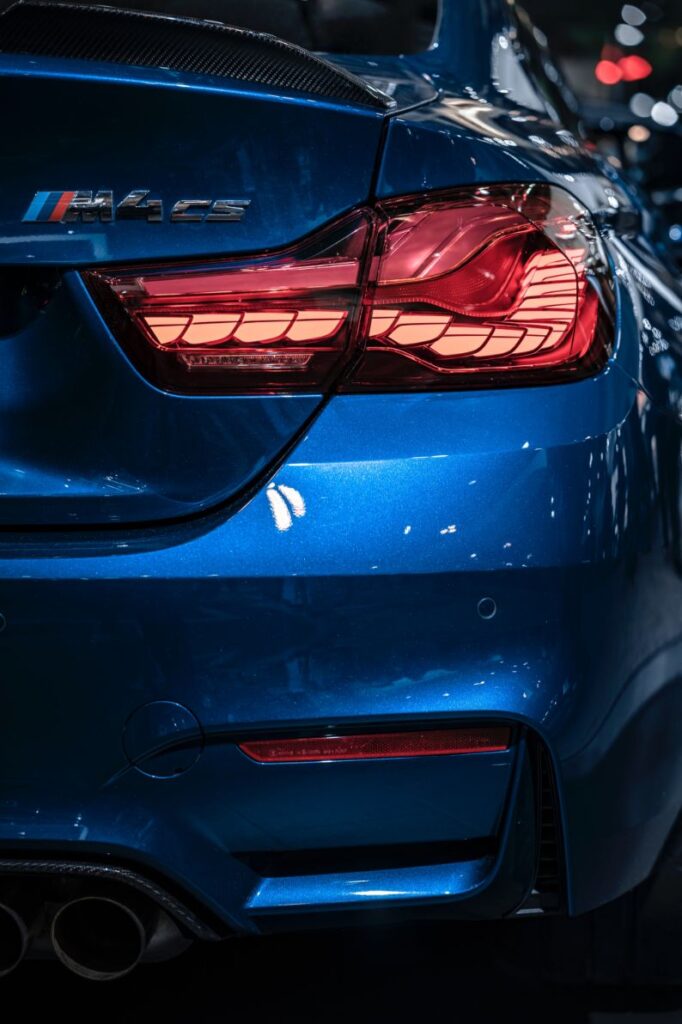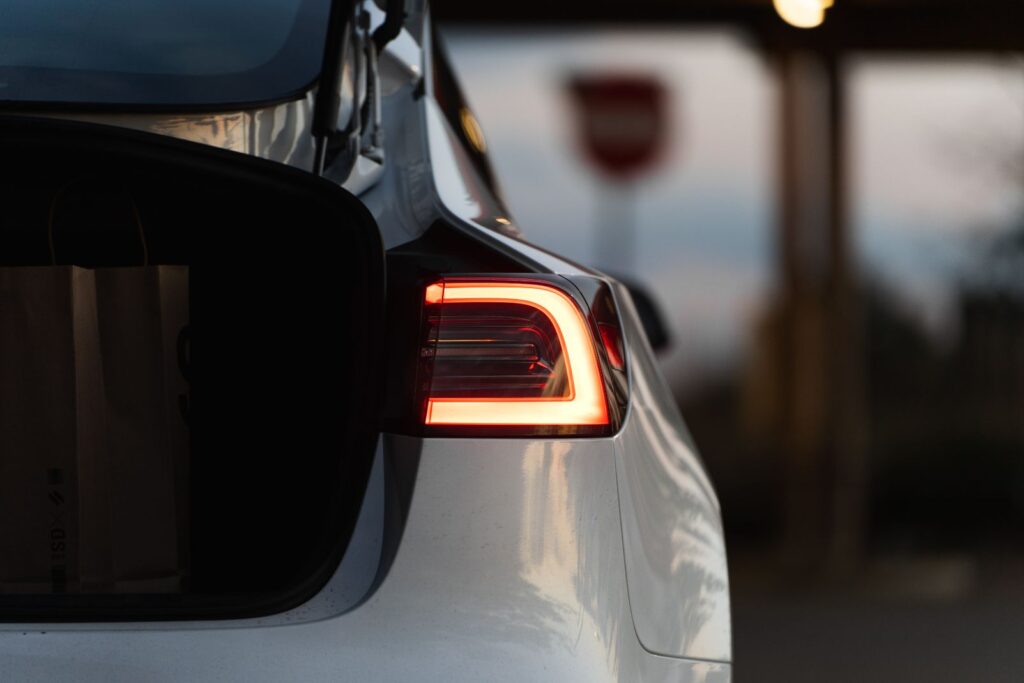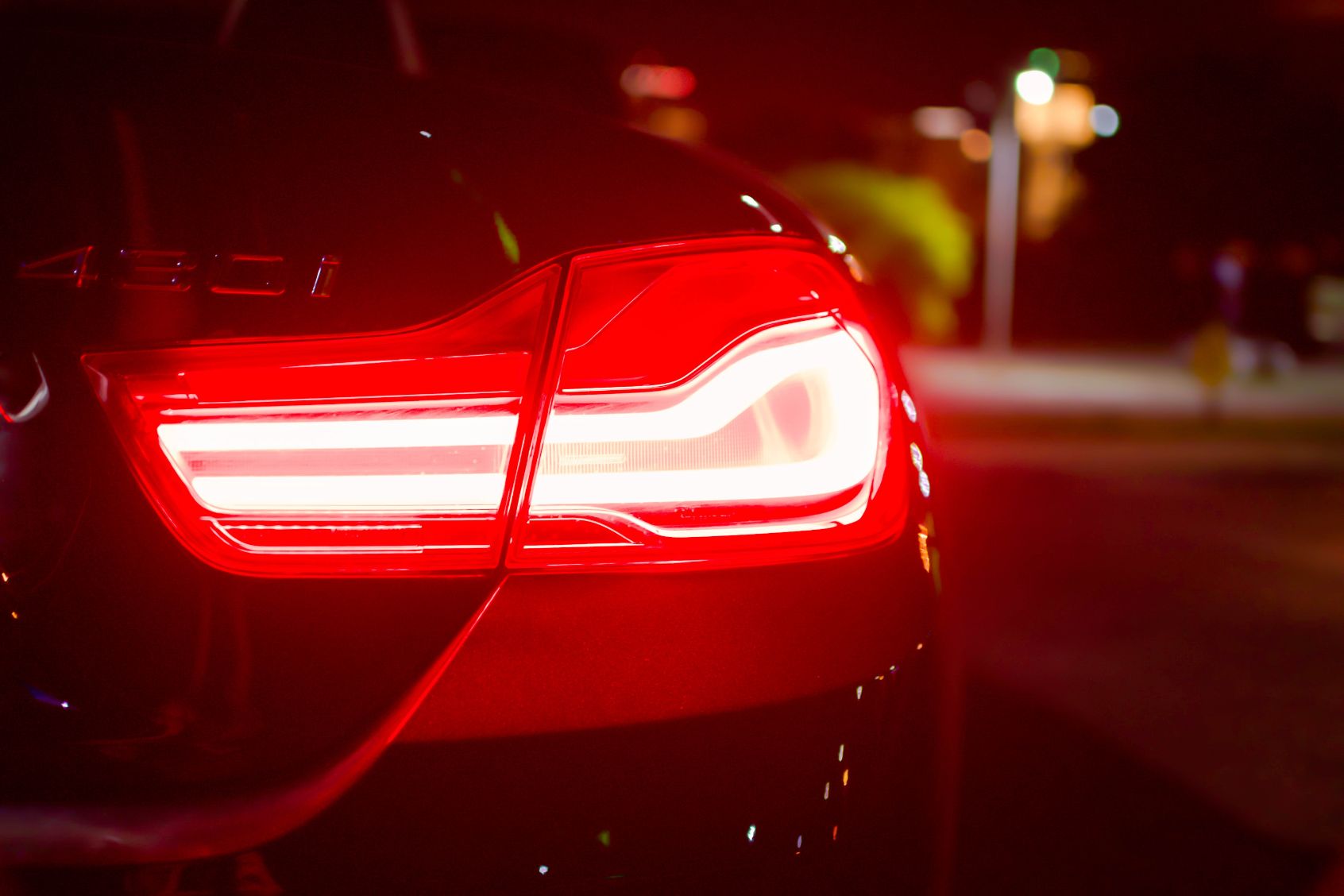At the back of the car are the brake and tail lights. Does the fact that they are both typically protected by a single external housing imply that they are identical in every way? When you apply the brakes to slow down, brake lights on your taillight let other drivers know. The tail lights are lights that come on when the headlights are on to provide visibility for drivers behind you at night or in bad weather. To find out more about brake and tail lights, read this article.
What Is A Tail Light In Cars?
At the back of your car, there are red lights called tail lights. When you turn on the headlights, they illuminate. They appear red when driving but turn bright red when stopping.
The location of the taillights is at the rear edge of the vehicle, facing backward, as stated earlier. To amplify and increase the light’s brightness, some are constructed with reflective materials. More American states only allow red tail lights.
Relays are used to power taillights. Therefore, there is no need for the driver to turn on the light. Instead, it activates when you turn on the headlights. Cars typically have a switch for the headlights and a switch for the taillights, making it simple to turn on the taillights without using the other switch. In a nutshell, what purpose do tail lights serve?
To be exact, a safety feature in cars is the taillight. So that other drivers behind you can see the back edges of your car and get an idea of its size, they project the rear end of the vehicle. The risk of accidents at night is unquestionably reduced.
What Is A Brake Light In Cars?
Brake lights are which lights? The brake lights on your car’s back end are red lights, just like the tail lights. When you press the brake pedal, they turn on, and when you release it, they turn off. Despite being installed in the same spot as the tail lights, they emit red lighting that is more intense.

They might be put in the same housing units, depending on the make and model of your car. The brake light is a safety feature that warns oncoming traffic that you are stopping or about to slow down, giving them time to reduce their speed or move to a different lane to avoid collisions.
Drivers behind you should maintain a safe distance from your car when braking if your brake lights are working. Your brake lights alert the drivers behind you to your stop or the presence of traffic so they can make timely preparations.
Additionally, they are easier to see in rainy, snowy, dark, and sunny conditions thanks to the brighter red brake lights.
The housing units for brake lights and tail lights are the same. Many people may then wonder if the bulb used for brake and tail lights is the same. Various designs are available for various vehicles. Some vehicles use a single bulb for both the brake and tail lights.
This does not imply that pressing the brake pedal will activate the taillight. These lights are controlled by two filaments in the bulb, one of which is for the brake lights and the other for the taillights. However, in some vehicles, the tail and brake lights are controlled by two different bulbs.
What’s The Difference Between Tail Lights And Brake Lights?
The primary distinction between brake lights and tail lights is that the latter only comes on when the brake pedal is pressed, whereas the former illuminates as soon as the headlights are turned on. While both lights are red, brake lights typically have a brighter red light.
Are My Brake Lights And Tail Lights Using The Same Bulb?
The brake lights and tail lights on many cars use the same bulb. Inside the bulb, there are two filaments: one for the brake light and one for the taillight. Additionally, some automobiles have a unique bulb for each circuit.
The best way to tell if your brake lights and tail lights share the same bulb is to have a helper press the brake pedal while you watch which bulb illuminates in the tail light assembly.
As a side note, the brake lights (stop lights) on the majority of cars also serve as turn signals. When the stop lights are activated and a turn signal is selected, the stop light on that side of the car will flash.
Typically, the stop lamps are wired through the turn signal switch and its flasher or module. Vehicles with stand-alone turn signals are an exception; they are typically orange rather than red and only function as turn signals or hazard flashers.
The turn signal/brake lights are brighter and draw more current than the tail lights, which despite using the same bulb, aren’t as bright.
What Causes A Failed Rear Light?
Failure of a tail light or brake light can occur for a number of reasons. These include:
Burnt Bulb
One of the most frequent causes of brake lights and tail lights not working properly is a burned-out bulb. If you notice that your brake lights are working but your tail lights aren’t, it might be time to change the bulbs.
Circuit Problem

The tail light may stop working because of corroded bulb sockets and damaged wiring.
Blown-out Fuse
If the fuse blows, the circuit can’t be finished, which in this case would stop the tail lights from turning on. When a tail light lens cracks, moisture may occasionally get inside and cause a short circuit that can blow a fuse.
Defective Brake Light Switch
The brake light switch may be broken if the taillight is on but the brake light is malfunctioning.
The brake switch contact may be stuck, which would cause the switch to continue powering the brake light if the brake light remains on after you release the brake pedal. It might also be the result of the brake light switch have shifted out of place, leaving a space between its plunger and pedal and preventing the switch from closing.
The brake pedal may not complete the circuit if the brake lights don’t illuminate at all. This can be caused by the switch being pushed out of alignment or being connected incorrectly.
Additionally, if you depress the brake pedal but the brake light does not illuminate, it may be that the brake pad is worn and the brake light is unable to detect your depressing brake pedal.
FAQs
Can I Drive If Only One Of My Brake Lights Is On?
By alerting drivers behind you when you’re slowing down or stopping, the brake light is a crucial safety feature that helps reduce traffic accidents. You run the risk of being injured while driving without them.
Brake lights can malfunction at any time and without any prior notice. You can still drive even with broken brake light. Because these bulbs can fail without warning, the police officer may be forgiving if they pull you over for driving with one brake light out. However, if they discover two broken brake lights, they might write you a ticket.
Do All Three Brake Lights Have To Function?
All brake lights must remain in good operating condition in accordance with a regulation put forth by the National Highway Traffic Safety Administration (NHTSA) in 1986. So, if you’re driving with only two brake lights, an officer might give you a ticket.
Can I Operate My Vehicle With A Damaged Tail Light?
Driving with a damaged tail light is prohibited by National Highway Traffic Safety Administration (NHTSA) law. All tail lights must function properly. This implies that the two tail lights are clearly lit.
